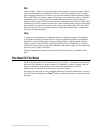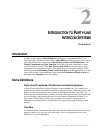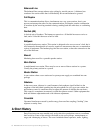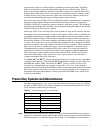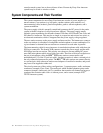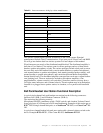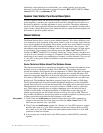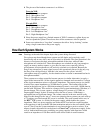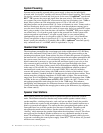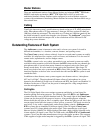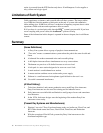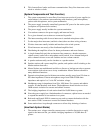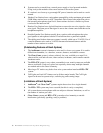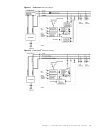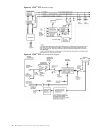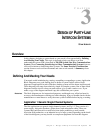
14 Handbook of Intercom Systems Engineering
System Powering
Systems can be centrally powered with a power supply or they may be individually
powered with “local power” modules, also known as built-in power supplies. The systems
can also be a mixture of central and local power. In the cases of Audiocom
®
systems and
RTS
™
TW systems, the power and signal share the same wire(s). This means, for those
two systems, the power supplies DC source must be ultra low noise/quiet, circa -70dBu or
better. Most systems can work using main powers of 120 or 240 volts AC. Some
individual stations can be powered with 2 or 3 nine volt batteries in series. Venues such as
the Rose Parade may have to use a pair of batteries from the telephone company just to
cross the street. Since this may involve a mile of copper wire, there is no central DC source
that’s going to make it. Out come the nine volt batteries! The RTS
™
TW power supplies
can tolerate only a 5 volt peak-to-peak signal on the powered line. In this system, each
station can generate a maximum 2 volt peak to peak signal, so two stations talking
simultaneously can add up to 4 volts peak to peak. So, there is just 1 volt of headroom.
Clear-Com specifies a range of signal levels of .5 v p-p to a maximum of 4v p-p, but
doesn’t specify the reference (it is probably dBu or dBv). Audiocom
®
intercoms specify
only a nominal level of 1 volt RMS, which is equivalent to 3 v p-p.
Headset User Stations
The microphone preamplifier has a maximum gain in the neighborhood of 53 dB. Many
stations have Automatic Gain Control (AGC), which adjusts the gain according to the
incoming microphone signal. Some stations also have a limiter that prevents overloading
the intercom line. An electronic switch is placed between the microphone preamplifier and
the current source (line driver). This substantially reduces noise on the intercom line. A
hybrid connection is necessary to sort out the talk and listen signals (a two wire to four
wire converter would work best). The listen signal goes from the hybrid to the listen
volume control. The listen volume control drives the headphone amplifier that has a gain
in the range of 30 to 40 dB. For a 50 ohm headset, the headphone amplifier produces
maximum peak sound pressure levels of around 105dB. This is the level needed at
concerts and sporting events (along with 20dB acoustic isolation of the headset). In less
strenuous situations, a handset instead of a headset may be used with these stations. These
stations must have a bridging impedance of 10,000 ohms or higher. The current drains
range from 30 to 65 milliamperes. Most systems have signal levels that range from -15dBu
to 0dBu. In the case of Clear-Com
®
and RTS
™
TW systems, the AGC / limiters in the
microphone preamplifier tend to keep the level in the -10dB range. This enhances
intelligibility and compensates for differences between voices and headset microphones.
Usually the headset amplifier has enough gain to make up the differences (by readjusting
the volume control).
Speaker User Stations
Most of these stations can operate in both a speaker/microphone mode and a headset
mode. The difference between a headset only station and the speaker station is that a
speaker amplifier, switching electronics, and a null pot are added. Usually the portable
speaker stations use a push-to-talk microphone, whereas the fixed speaker stations use a
panel or gooseneck microphone. The stations that have microphone and speaker on the
same panel have less available speaker level because of feedback. The push-to-talk
microphone has much better isolation. Speaker stations often have “dimming” or
“ducking” which attenuate the speaker output when the microphone is keyed. This allows
more gain and less feedback. Speaker stations use a very substantial amount of current,
about 120 milliamperes. So, fixed speaker stations are ideally operated with local power,
to prevent overloading the central power supply. Some RTS
™
TW are direct AC powered
and do not use central power.



